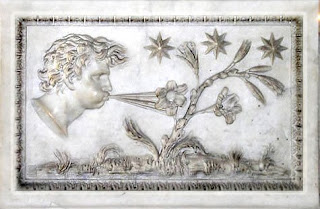
The General Prologue of the Canterbury tales was a magnificent way to start the story. This prologue serves as the introduction or exposition in the present day story. Geoffrey Chaucer sets up the story in a specific time, place, and season. For instance, "Whan that Aprill with his shoures sote/ The droughte of Marche hath perced to the rote" (lines 1 and 2). Chaucer sets this tale up with an analogy to Spring and new beginnings, not to mention a time for travel. Hence, the pilgrimages to religious shrines (in this case Canterbury) in this nice blooming new weather.
I looked up information on the Tabard Inn, where this story begins, and Chaucer must have came into contact with this place. Drinking perhaps? For instance, states in the Wikipedia, a universal and often sometimes not credible site, states that the Tabard Inn, located in Southwark, England on Borough High Street was established in 1307, and often served as an accomodation to the large amount of pilgrims
that headed on the annual pilgrimage to the Shrine of Thomas a Beckett in Canterbury. Also, this Inn was owned by Harry Bailey. Therefore, Chaucer used real life people and real places for his tales. Just like an exposition, Chaucer explains to his readers the individual characters. I also find this interesting considering his character types are still present in our society. For instance, the Wife of Bath, had five husbands, was very flirtatious, dramatic, and needy (the present day gold digger or someone who marries a lot of men either out of pickyness or money) and, the squire, a lusty bachelor, a player in present terms; he is very handsome and I picture him to be cocky. Every character type in this story can be found in the present.
This is a picture of Thomas a Becket's holy shrine still located in the Canterbury cathedral. He was assassinated in the cathedral by the followers of Henry II of England. Thomas a Becket was a martyr and a saint according to the Roman Catholic. I believe that because of Chaucer's London connections he knew of this tragedy and sainthood. It is amazing how much of the Canterbury Tales bare truth around the time of Chaucer.
My last picture is that of Zephirus, the Greek God of the west wind. He was also known as the messenger of Spring. I find this very interesting that Chaucer knew of this God. Did Chaucer study greek mythology? Or how did this fit in with his personal life?



That is a great picture for the reprsentation of Zephrius
ReplyDelete